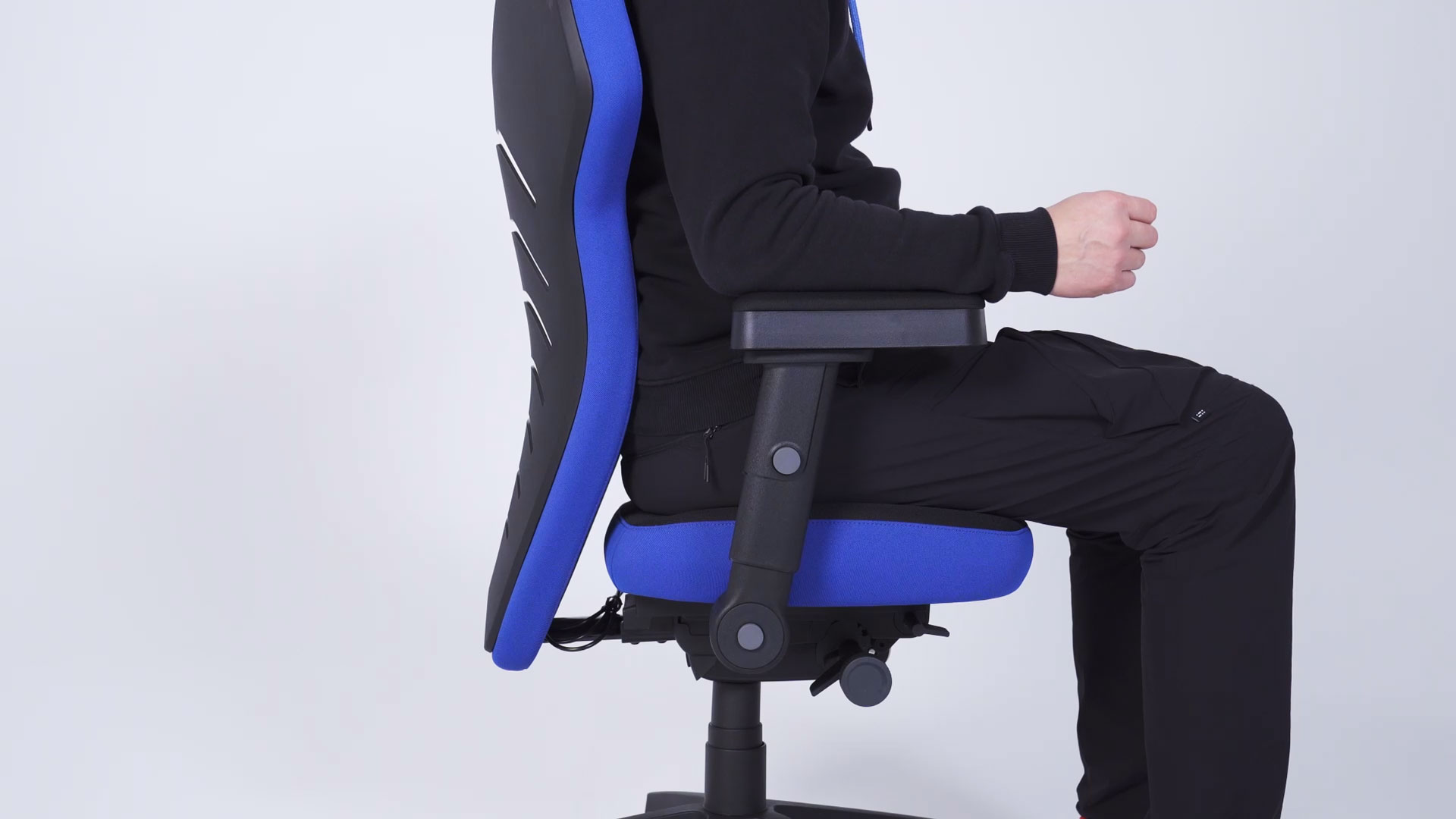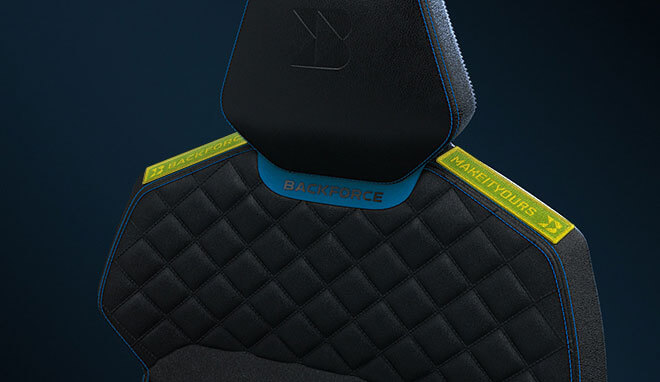How do I adjust my chair to sit ergonomically?
26.10.2023

How do I adjust my chair to sit ergonomically?
Whether at work in the office or home office, or when gaming at home: we sit a lot! The lack of freedom of movement leads to tension and pain for most people sooner or later. Meanwhile, many manufacturers of gaming chairs promise a remedy. But not all chairs are ergonomic. Therefore, a high-quality chair is a basic requirement to be able to sit really well. But you can sit incorrectly, even on an ergonomic chair!
To achieve its full effect, your chair must be adjusted to your body. We'll show you the best way to do that and give you tips on what to look out for.
Adjusting the chair height
The most important adjustment of an office chair is the chair height. Together with the table height, it has the greatest influence on your posture.
Ideally, the chair and desk height can be adjusted independently of each other. If this is the case for you, first adjust the chair height: Your legs are firmly planted on the floor and form approximately a right angle. If your chair is set too low, the acute angle in your legs can lead to poor circulation and tension. Then adjust the table height so that your arms rest on the tabletop at an angle >90° when you are sitting upright. Pay special attention to your shoulders. They should be relaxed. Hunched shoulders over a longer period of time also lead to tension.
If the height of your desk cannot be adjusted, it is important to adjust the height of your chair so that your shoulders are in the correct position. Even if your feet are not in contact with the floor. As long as you don't rest your feet on the base, there is no disadvantage, and it relieves the pressure on your shoulders. If you rest your feet on the chair cross, you create a more acute angle in your legs, which is bad for blood circulation.
Adjusting armrests
The same principle applies to armrests as it does to table height. Your shoulders should be as relaxed as possible, and your arms should rest at an angle of about 90°. Angles slightly greater than 90° are generally preferable. The more "open" the angle, the less chance there is that blood flow will be impeded.
Adjusting the synchronous mechanism
There are several mechanisms in office chairs that allow you to recline. Most suppliers resort to simple tilt and rock mechanisms, which are not particularly ergonomic. The greatest stress on the body when sitting comes from the lack of movement. The intervertebral discs in particular depend on regular movement to be supplied with nutrients. Even if you sit upright, staying in the same position will eventually lead to tension and, sooner or later, pain. Simpler mechanics tilt or rock the entire chair. You may feel like you're moving, but in fact your body stays in the same position.
Manufacturers like BACKFORCE, who only install high-quality synchronized mechanisms in their chairs, offer an ergonomic alternative here. Thanks to the synchronous mechanisms, the seat and the back of the chair move in a fixed relationship to each other. This means that your body is always optimally supported, no matter how far you lean back. The angle of your upper and lower body can "open up". Both prevent tension. The synchronous mechanism can be locked on every BACKFORCE if you don't need it or want to fix your sitting position. However, we recommend leaving it unlocked for normal sitting.... This promotes more active sitting by, relieving pressure on your discs and the rest of your body. One of the main reasons you can sit on a BACKFORCE chair for so long!
In order for your synchronous mechanism to work optimally, the resistance must be set correctly. With the BACKFORCE V this happens automatically. For all other BACKFORCE chairs, do the following:
- Place your legs at a right angle on the floor
- Make sure that the synchronous mechanism is unlocked
- Lean into your chair as far as possible
- Extend your legs and lift them about 3 cm off the floor
The chair should now stand up on its own.
- If your chair does not move or hardly moves, the resistance is set too weak.
- If your chair pushes you forward a lot, the resistance is set too high.
- If your chair gets up at a moderate pace, the resistance is set optimally.
Read more about the synchronous mechanism at BACKFORCE
Other settings
Other models, such as the Plus variants of the BACKFORCE ONE & V, have further options for adjusting the chair to suit you perfectly, in addition to the settings mentioned so far.
The seat depth adjusts the distance between the seat and the backrest. This is especially important if you have particularly long or short thighs. Adjust the seat depth so that there is about three finger widths of space between the end of the seat and the back of your knee.
The seat tilt offers another way to influence the angle at which you sit on the chair. The second position opens up the angle between the back of the chair and the seat even more. This is especially beneficial if you suffer from a herniated disc in the lumbar spine, for example. The principle is similar to that of a wedge cushion. But even with general pain in the lower back, a more open angle can provide relief.
Lordosis is the natural curvature in the neck and lumbar spine. Excessive forward curvature in the lumbar region results in a hollow back. To relieve the body, every BACKFORCE chair has a lumbar support. On BACKFORCE V and ONE, this is firmly integrated into the profile of the backrest. In the PLUS variants of BACKFORCE, it can also be adjusted individually. The lumbar lordosis is located about 3 cm above the waistline. Adjust the lordosis so that you are well-supported here without forming a hollow back.
Most important tip:
With these tips, you can adjust your chair to fit you perfectly. This will allow you to sit in your chair for as long as possible and prevent pain.
The main problem when sitting remains the lack of freedom of movement. Therefore, make sure that your synchronous mechanism is unlocked for as long as possible and get up every hour or so, for example, to get a glass of water or go to the bathroom. Even the best chair is no use if you can't stretch your legs from time to time!
back to overview
